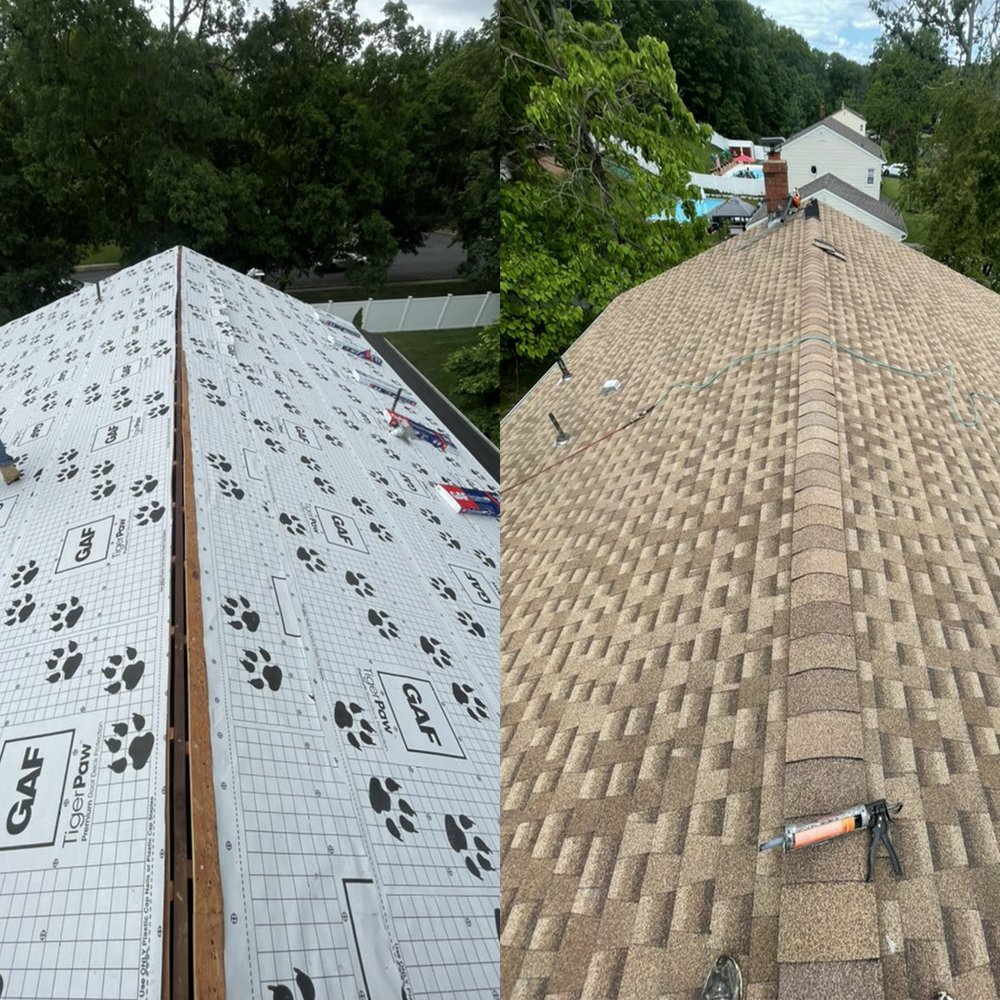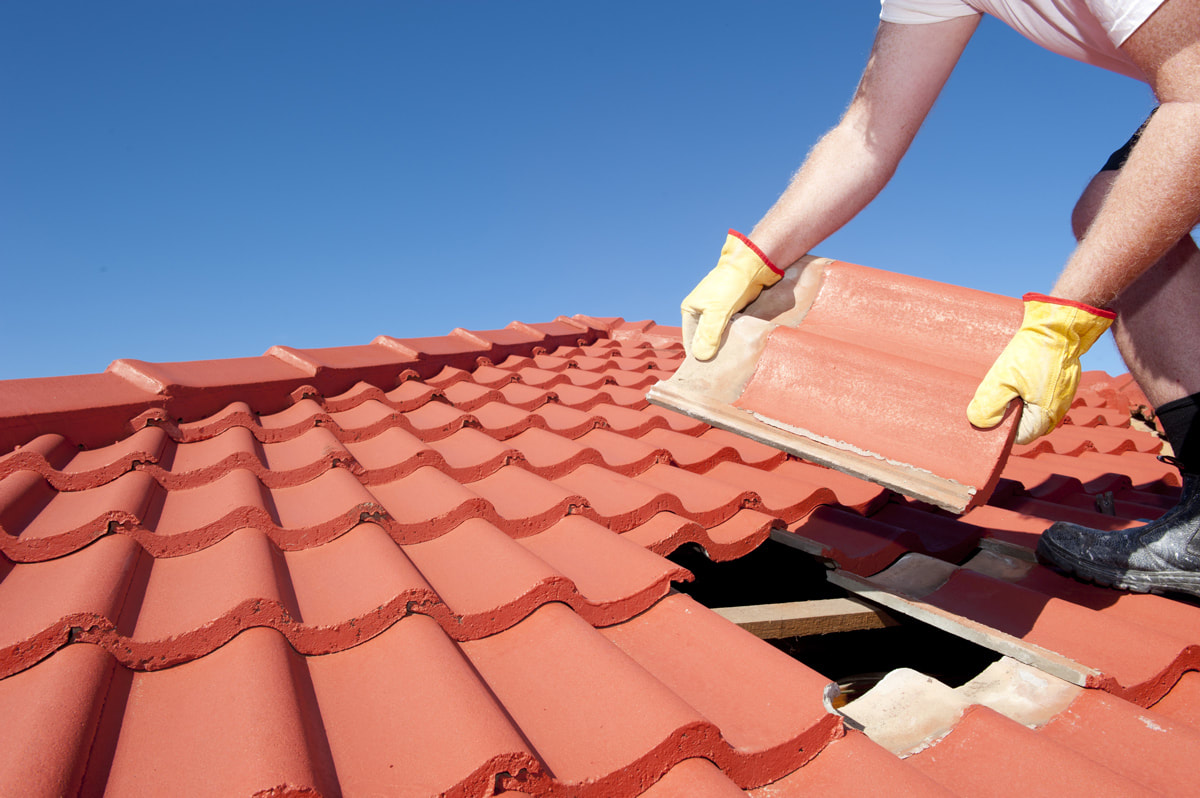Roofing Oahu: High Quality Providers for Sturdy Roofs in Oahu
Roofing Oahu: High Quality Providers for Sturdy Roofs in Oahu
Blog Article
Understanding the Different Types of Roofings: A Comprehensive Guide for Homeowners
With a range of alternatives-- ranging from the traditional gable to the modern flat-- each type presents distinct benefits and obstacles that need to straighten with the property owner's ecological factors to consider and certain demands. As we explore the details of different roof types, it becomes apparent that one dimension does not fit all; the right option might shock you.
Gable Roofs
Saddleback roofs, defined by their triangular form, are among one of the most popular roof covering designs as a result of their simplicity and performance in losing water and snow. This style features 2 sloping sides that fulfill at a ridge, permitting effective water drainage and reducing the threat of water build-up. The high pitch commonly associated with gable roofing systems boosts their capability to deal with heavy precipitation, making them appropriate for different climates.
In enhancement to their practical advantages, gable roofing systems provide aesthetic flexibility. They can be adapted to various architectural designs, from typical to contemporary homes. The design can additionally fit added features such as dormer windows, which enhance all-natural light and ventilation in the attic room.
Additionally, saddleback roofs provide adequate area for insulation, adding to power effectiveness. Property owners can select from a selection of roof products, including asphalt shingles, steel, and floor tiles, better enhancing personalization options.
Regardless of their benefits, gable roofings may call for added support in areas vulnerable to high winds or heavy snowfall. In general, the gable roofing system remains a popular choice because of its blend of functionality, toughness, and visual allure.
Apartment Roofs
Level roofings are typically identified for their minimalist design and practical applications, especially in commercial and commercial setups (oahu roofing). These roofs include a straight or almost horizontal surface, which enables very easy building and versatile space use. While they might do not have the visual charm of pitched roofings, level roofings provide many advantages, specifically in city settings where maximizing area is essential
One of the main advantages of flat roofs is their access. Property owners can make use of the roof room for various objectives, such as rooftop gardens, balconies, or photovoltaic panel installations. In addition, level roofing systems are commonly more economical to maintain and install contrasted to their sloped equivalents, as they call for less materials and labor.
Common materials used for flat roofings consist of built-up roof covering (BUR), changed asphalt, and single-ply membrane layers, each offering distinct advantages. Overall, flat roofs serve as a adaptable and functional option for many homeowners and businesses alike.
Hip Roof Coverings
Hip roof coverings are defined by their sloped sides that converge at the top, forming a ridge. This layout stands out from saddleback roofs, as all four sides of a hip roofing slope downwards towards the wall surfaces, giving a much more steady structure. The angle of the inclines can differ, enabling for flexibility in architectural appearances and performance.
One of the primary benefits of hip roof coverings is their capability to withstand hefty winds and negative weather. The sloped surface areas allow far better water drain, reducing the risk of leakages and water damage. Furthermore, hip roofings provide enhanced attic room space, which can be used for storage space or even converted right into comfortable locations.
Nevertheless, creating a hip roofing system can be more expensive and intricate than simpler roof covering types, such as saddleback roofs. The additional material and labor associated with developing the slopes and making certain proper architectural honesty can result in greater expenses. In spite of these drawbacks, numerous homeowners prefer hip roof coverings for their toughness, aesthetic appeal, and capacity for power effectiveness.
Mansard Roofs
Mansard roofs, typically identified by their distinct four-sided style, attribute 2 inclines on each side, with the lower slope being steeper than the top. This architectural design, stemming from France in the 17th century, is not just cosmetically appealing but practical, as it takes full advantage of the usable space in the top floors of a building. The high lower slope enables more clearance, making it an ideal option for loft spaces or attic rooms, which can be exchanged living areas.
Mansard roofing systems are characterized by their adaptability, accommodating various architectural designs, from standard to modern-day. They can be created with different products, consisting of asphalt tiles, slate, or steel, giving home owners with a variety of options to match their budget plans and preferences. In addition, the style permits the integration of dormer home windows, boosting all-natural light and ventilation in the upper degrees.
Nevertheless, it is necessary to take into consideration the prospective disadvantages. Mansard roofing systems might need more maintenance as a result of the intricacy of their design, and their high inclines can be testing for snow and rainfall drainage. On the whole, mansard roofings integrate beauty with practicality, making them a prominent selection amongst property owners seeking distinct building features.
Lost Roof Coverings
As home owners progressively seek simplicity roof repair oahu and capability in their architectural designs, dropped roofing systems have actually emerged as a popular selection. Characterized by a solitary sloping airplane, a shed roofing system provides a minimalist visual that matches different home styles, from modern to rustic.
One of the main benefits of a shed roof is its simple building, which commonly translates to decrease labor and material prices. This design enables effective water drain, lowering the risk of leaks and water damage. Furthermore, the upright incline supplies enough room for skylights, boosting natural light within the inside.
Dropped roofs likewise use read review versatility in terms of usage. They can be properly integrated right into additions, garages, or outside frameworks like sheds and structures. Moreover, this roof style can fit various roof covering products, including metal, asphalt shingles, or perhaps environment-friendly roof coverings, aligning with green efforts.
Nonetheless, it is important to consider local environment conditions, as heavy snow loads might demand changes to the roofing's angle or framework. Overall, lost roof coverings offer a functional and visually pleasing choice for property owners seeking to optimize functionality without compromising style.
Verdict


Gable roofings, identified by their triangular form, are among the most prominent roof designs her comment is here due to their simpleness and performance in shedding water and snow. oahu roofing. The steep pitch commonly linked with gable roofing systems boosts their capacity to handle heavy precipitation, making them ideal for various environments
While they may do not have the visual charm of pitched roofings, level roofs supply various advantages, especially in city environments where optimizing space is vital.

Report this page